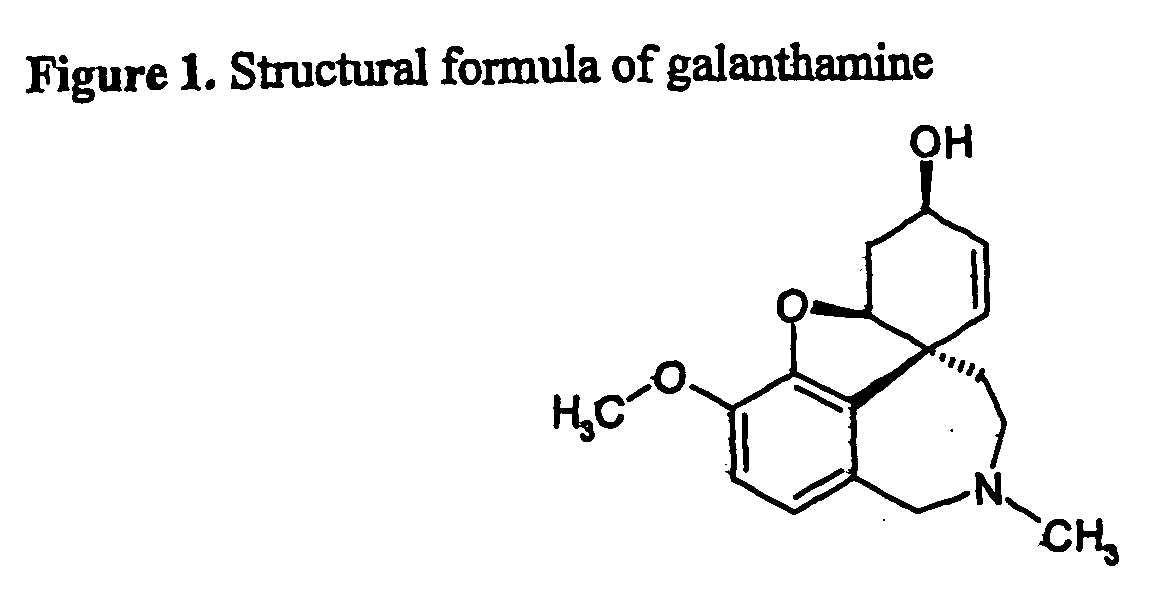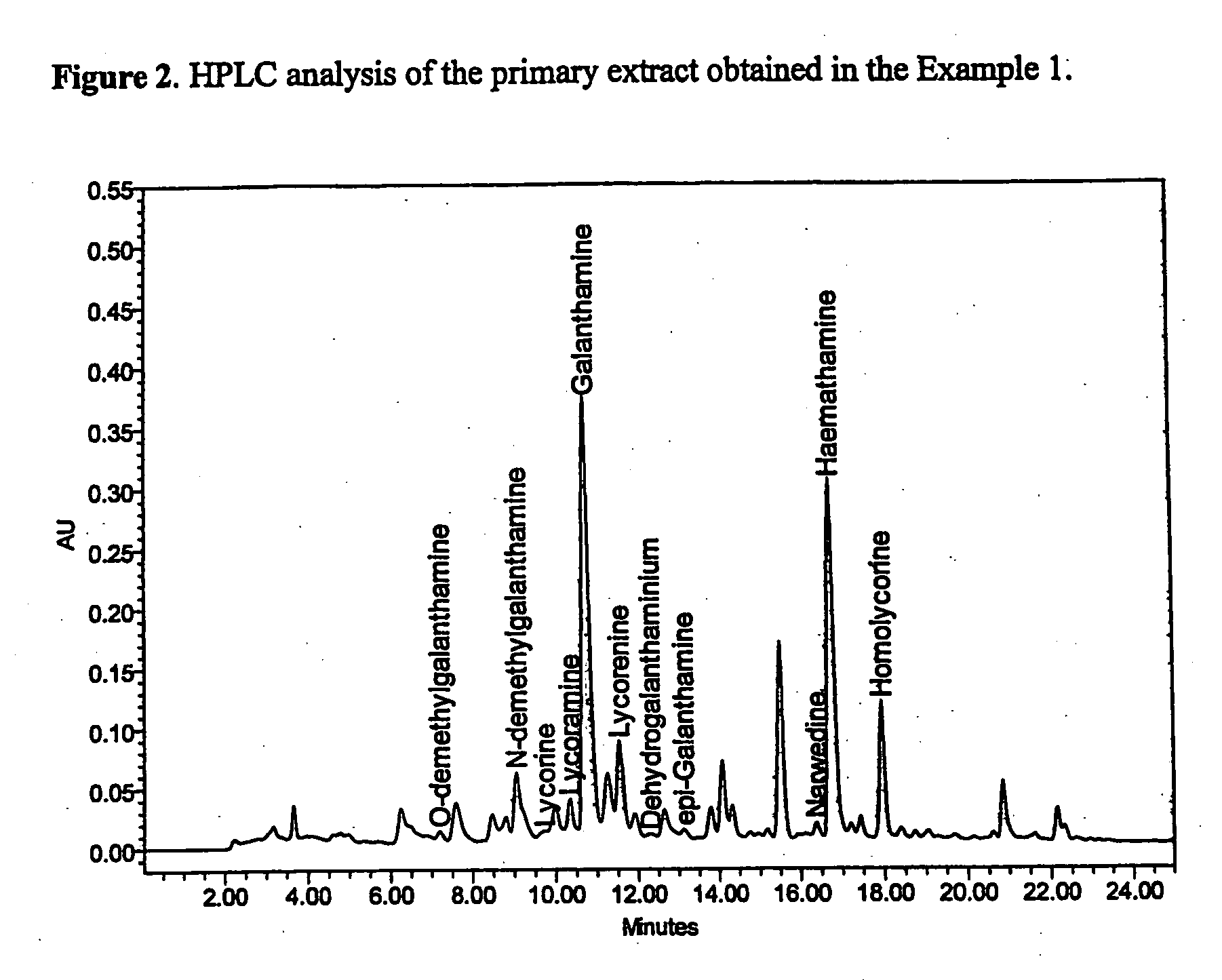Isolation of Galanthamine From Biological Material
a biological material and galanthamine technology, applied in the field of isolating galanthamine, can solve the problems of inability to produce enough substantially pure galanthamine, difficult scaling up of operations employed in these known processes, and lack of robustness and scalability for large-scale isolation
- Summary
- Abstract
- Description
- Claims
- Application Information
AI Technical Summary
Benefits of technology
Problems solved by technology
Method used
Image
Examples
example 1
Isolation of Galanthamine Hydrochloride from the Bulbs of Narcissus pseudonarcissus “Carlton”
[0040]Bulbs of narcissus (Narcissus pseudonarcissus “Carlton”) containing 0.12% of galanthamine (determined by HPLC) were comminuted and filled into pilot plant battery of percolators 4×100 l (75 kg of comminuted bulbs was filled into one extractor). Individual filled extractors were joined to the battery and extracted with 0.1% (w / w) aqueous solution of phosphoric acid counter current way. 125 l of primary extract was obtained from one extractor. The HPLC record of the analysis of the primary extract is presented on FIG. 2. The primary extract from one extractor was alkalized with 10% aqueous solution of potassium hydroxide to pH 9-10 and the solution was loaded on a 60 l column filled with non-ionic resin SP-825L. The column was further washed with 100 l water and the organic compounds were desorbed from the resin by elution with 60% (v / v) aqueous ethanol, obtaining 220 l of the concentrat...
example 2
Purification of Galanthamine Hydrochloride
[0043]30 g of galanthamine hydrochloride prepared in Example 1 and containing according to HPLC analysis 1.1% of narwedine was dissolved in 120 ml of water and 1.2 g of sodium borohydride was added in six portions within about 30 minutes under stirring. The solution was stirred for another 30 minutes at laboratory temperature and then 12 ml of 25% (w / w) aqueous ammonia and 200 ml of methyl isobutyl ketone were added to the solution. The organic phase was separated, concentrated to the volume about 100 ml and let to crystallize in refrigerator for 24 hours. The crystalline base of galanthamine was separated by filtration and dried, obtaining 19.3 g of galanthamine, which purity was determined by HPLC as 99.7% and where the content of narwedine was 0.04% (the HPLC record is presented on FIG. 7).
example 3
Isolation of Galanthamine (Base) from the Dried Leaves of Leucojum aestivum, L
[0044]40 kg of dried leaves of snowflakes (Leucojum aestivum, L.) containing 0.26% of galanthamine (determined by HPLC) was comminuted and filled into pilot plant battery of percolators 4×100 l (10 kg of comminuted leaves was filled into one extractor). Individual filled extractors were joined to the battery and extracted with 0.1% (w / w) aqueous solution of phosphoric acid by counter-current way. 150 l of primary extract was obtained from one extractor. The HPLC record of the analysis of the primary extract is presented on FIG. 8. The primary extract from one extractor was directly adsorbed on 60 L of non-ionic resin SP-825L filled in column, washed with 100 l of water and desorbed with 90% (v / v) of aqueous ethanol (200 l) and then with 50 l of water, obtaining a concentrate of alkaloids.
[0045]The concentrates of alkaloids obtained from all four extractors were combined and evaporated to the volume of 75 l...
PUM
| Property | Measurement | Unit |
|---|---|---|
| pH | aaaaa | aaaaa |
| volume | aaaaa | aaaaa |
| volume | aaaaa | aaaaa |
Abstract
Description
Claims
Application Information
 Login to View More
Login to View More - R&D
- Intellectual Property
- Life Sciences
- Materials
- Tech Scout
- Unparalleled Data Quality
- Higher Quality Content
- 60% Fewer Hallucinations
Browse by: Latest US Patents, China's latest patents, Technical Efficacy Thesaurus, Application Domain, Technology Topic, Popular Technical Reports.
© 2025 PatSnap. All rights reserved.Legal|Privacy policy|Modern Slavery Act Transparency Statement|Sitemap|About US| Contact US: help@patsnap.com



